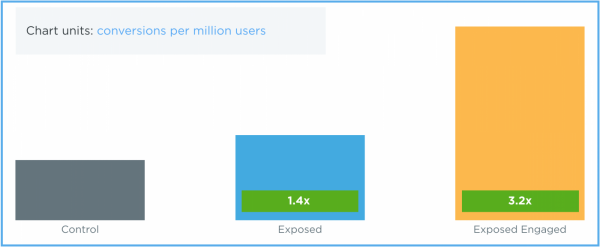
B2B marketers know that measuring ROI — and especially measuring the effectiveness of lead-generating efforts — is paramount. They also know that marketing on social media works when it comes to courting new clients. Often, though, it's hard to estimate just how many clicks and conversions those tweets, which have been labored over by designers and copywriters, are actually driving, in large part because users bounce from their phones to their computers to their tablets.

"Last-click attribution is an inaccurate reflection of what’s driving results, because the average customer switches between multiple devices, platforms, and sites before making a purchase," wrote Abhishek Shrivastava, group product manager at Twitter, in a blog post.
This problem of last-click attribution has been vexing marketers for years, particularly since the use of tablets and mobile browsing have taken off; currently, a user is more likely to reach your website on a mobile device than a desktop, according to a 2015 study.
To help marketers get a better idea of whether their ads are working — and how much their Twitter ads are adding to their bottom line —the social media platform has rolled out conversion lift, a "custom data-driven report designed to help you better understand the impact your Twitter Ads campaigns are driving."
With conversion lift, companies get a report that essentially A/B tests their tweets, demonstrating the efficacy of paid ads.
Twitter explains conversion lift as such:
When measuring a campaign for conversion lift, we automatically and randomly segment your eligible target audience into two groups: one that sees your ads (the test group) and another that doesn’t (the control group). At the end of the campaign, we calculate the incremental conversion lift of your campaign by comparing conversions across both the test and control groups, and then share this data with you in a custom report.
Put more simply, conversion lift creates a report that compares the results of users who are not exposed to your ad content to the results of those who are and, thus, illustrates the impact on sales.

Conversion lift delivers on two levels — first, it adds credence to the conventional understanding that Twitter ads work (according to Twitter, "people who are merely exposed to an advertiser’s Promoted Tweets are 1.4x as likely to convert") with actual data, and second, it backs up those statistics once your company actually employs them.
Conversion lift won't help you develop better content necessarily, but it can help B2B marketers establish whether their Twitter ads are working and what they might want to try next.
Related topic: How to Improve B2B Website Conversion Rates
by Jonathan Franchell, CEO of Ironpaper - For more tips and hacks: Need to remove a new line after h1 tags? Both web designers and SEO practitioners need to employ headline tags: H1, H2, H3 in several ways to improve web page structure and tag...

The Crowded Arena of the IT Marketplace Updated December 2024 The Information Technology (IT) landscape is experiencing rapid growth and intensifying competition. IT spending is projected to reach nearly 5.1 trillion U.S. dollars in 2024, a...

Updated December, 2024 The field of digital marketing is evolving rapidly in response to new technology and changing buyer expectations. To help career-minded marketers, we’ve rounded up the top 10 skills needed to succeed in the field. These are...
